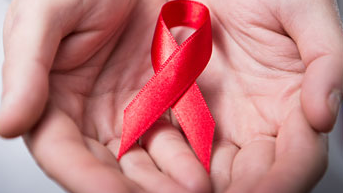May 18th: HIV Vaccine Awareness Day.
Important progress in testing HIV vaccines: today, 18 May 2020 on HIV Vaccine Awareness Day, also known as World AIDS Vaccine Day, many initiatives are taking place worldwide to raise awareness of the search for a vaccine capable of preventing infection and of increasingly effective therapies in the fight against AIDS.

Originating in 1998, to commemorate a commencement speech made by Bill Clinton on May 18, 1997 at Morgan State University, World AIDS Vaccine Day offers an opportunity to call attention to the difficult task which global public health has been facing, for several years, in the search for an effective vaccine. In fact, a vaccine to prevent AIDS represents a real challenge for the global scientific community especially in relation to the intrinsic characteristics of the virus that causes it: HIV.
Belonging to the Retrovirus family, HIV is the causative agent of acquired immunodeficiency syndrome (AIDS), a pathology affecting the immune system that represents the terminal clinical stage of infection. Equipped with a peculiar replication mechanism that is expressed by the action of a particular enzyme known as "reverse transcriptase", the virus is able to transform its genetic RNA into a double strand of DNA. This enters the genome of the infected cell (called "host cell" or "target cell") within which it governs the production of new viral particles. This process, sometimes subject to numerous errors of gene expression, frequently causes mutations resulting in enormous genetic variability and therefore new HIV genotypes.
These mutations facilitate the generation of HIV variants which, by virtue of the new pathogenic factors expressed, can escape control by the host's immune system and resist the action of antiretroviral drugs.
In this sense, the consequence of viral activity can be expressed in two variants: the virus can lie latent within the cells it has infected by evading the host's immune system, or it can direct the reproduction of new viral particles that destroy the cell inside which they have multiplied.
The main target cells of HIV are particular cells of the immune system, CD4-type T lymphocytes, essential in the adaptive response against various types of pathogens and oncogens; thus, HIV infection causes a progressive weakening of the immune system (immunosuppression), increasing the risk of both tumours and infections by viruses, bacteria, protozoa and fungi.
The infection can be transmitted through blood, sexual and maternal-foetal routes. In particular, blood-borne transmission is the main way the infection spreads, especially in intravenous drug users due to sharing needles, or other materials used for this practice. Furthermore, it should not be forgotten that the same mode of transmission is also common to other viruses such as those responsible for Hepatitis B and C.
The transmission from mother to child, called vertical transmission, can take place during pregnancy, during childbirth or with breastfeeding, while sexual transmission (which globally represents the most widespread transmission mode), occurs through unprotected sexual relations, both heterosexual and homosexual. The transmission, in fact, occurs through the contact between infected biological fluids such as vaginal secretions, pre-ejaculatory fluid, sperm, blood and mucous membranes (even where these appear superficially intact).

The history of the HIV / AIDS epidemic is usually traced back to 1981 when a new disease was recognised in some patients in the United States. Spread exponentially all over the world, unlike all other previous epidemics, for a long time it was fatal in almost 100% of all cases diagnosed.
Today, HIV has become endemic in developed countries, where the number of deaths has fallen, but not the number of infections. However, it is still one of the most serious mortality factors in developing countries, at the root of serious social, ethical, economic and organisational problems.
In 2018, 2,847 new diagnoses of HIV infection were reported in Italy alone, equal to 4.7 new cases per 100,000 residents. Of those diagnosed HIV positive in 2018, 85.6% were male. The median age is 39 years for males and 38 years for females, while the highest incidence was observed in the 25-29 age groups (11.8 new cases per 100,000 residents) and 30-39 with 0.9 new cases per 100,000 residents).
Since 1996 a combination of drugs has been able to "immobilize" the virus, blocking the development of the immunodepressive syndrome, thus causing the infection to become chronic. Together with new cases, this phenomenon contributes to the continuous increase in the prevalence of infected subjects. Today the life expectancy of a HIV-infected patient is certainly longer than in the past and qualitatively much higher, but this is not enough in the face of the precariousness of life and the poor health of patients affected by this condition, alongside the innumerable sufferings to which those who do not have access to treatment are subjected, in particular in developing countries.
Therefore, since to the best of current knowledge, it is not possible to eliminate the virus once the infection has been established, the best aim in the fight against this disease comes yet again in the form of Preventive Medicine, and in particular by vaccination.
In reality, the research follows two different paths:
• Preventive vaccines, which direct the immune response against the virus before the infection occurs, so that the body can neutralise the virus should infection take place. To date no vaccines have been licensed;
• Therapeutic vaccines, which strengthen the immune response of infected subjects to help the person control the virus without antiretroviral drugs (ART) or can be used as a supplement to ART regimens. To date no vaccines have been licensed.
As far as preventive vaccines are concerned, great hopes have long been placed in subunits, built on the model of the flu vaccine; in fact, a very promising first phase had shown efficacy values of around 30% (RV144 in Thailand), however, a more extensive study called HVTN 702 or Uhambo conducted in South Africa did not confirm the expected results.
Research pursued the possible use of vaccines with viral vectors; in particular, the HPX2008/HVTN 705 or Imbokodo study, conducted in Africa, appears promising. In this study, a vaccine with attenuated Adenovirus 26 is currently being tested in Phase IIb as a vector of inactive fragments of HIV (Mosaic) and gp140, a protein of clade C (there are at least 12 different clades of HIV).
Yet another study with a vaccine very similar to the previous one, but with a Clade B protein (study HVTN 706/HPX3002 or Mosaic), in Phase III, is currently being conducted in the Americas and in Europe, where this Clade of HIV is more widespread. Results are expected in 2023.
Finally, a highly promising fourth trial program, known as PrEPVacc, has begun collecting data on HIV risk and other demographics, in preparation for a phase III clinical trial, which in Africa will simultaneously test a combination of experimental HIV DNA-MVA- or DNA-Env vaccines and oral PrEP.
While awaiting the development of effective vaccines, research, therapeutic experimentation, diagnostics and patient care are continuing within our Region. In particular, a major role in the treatment of HIV and AIDS is played by the Infectious Diseases Unit of the University Hospital of Sassari. To date, approximately 700 patients are in treatment for HIV and AIDS infection while over a thousand are being treated by the specialists led by Professor Sergio Babudieri in prisons, at the Serd (Addiction Service), in group homes and in rehabilitation centres. A very extensive activity that goes beyond the city limits, covering much of northern Sardinia. "The unit has been occupied by the Covid-19 health emergency in this period, but we are working to reopen Infectious Diseases to patients with HIV and AIDS and to provide them with therapeutic support - explains Professor Babudieri - with the aim of doing so by mid-June".
In the words of Prof. Paolo Castiglia, Project Leader for Vaccinarsinsardegna.org and Director of the Hygiene and Control of Hospital Infections Unit: “Never as this year, catalysed by COVID-19, has the challenge to vaccine research been felt. While the search for a HIV vaccine has in fact been long-suffering, also due to the stigma surrounding this infection, and for which adequate resources have not always been forthcoming, the SARS-Cov2 pandemic has clearly made everyone aware of the need to strive for vaccination. The lasting and sustainable end to any pandemic in fact depends on the availability of a vaccine. This day is therefore an opportunity to continue to keep the spotlight on HIV infection which, in recent years in Italy, seems to affect the younger sections of our society."
This year's HVAD is therefore an important occasion in which, taking stock of the progress and incalculable contributions of the participants in the studies and of the researchers who have conducted and continue to conduct them, not only do we once again want to recall the attention to the as yet unmet need for a HIV vaccine, but also to emphasise how the work carried out, albeit under difficult circumstances, for HIV has in fact created an extraordinary basis, unprecedented in vaccine history, for the speedy development of the COVID-19 vaccine, for which more than 90 vaccination trials have been launched in 4 months.
This awareness day therefore offers the opportunity to also support the collaboration required to face the next epidemic by giving a new impulse to research, greater trust to citizens and the hope of a healthy life where prevention will prevail over infectious diseases and the agents that cause it.



